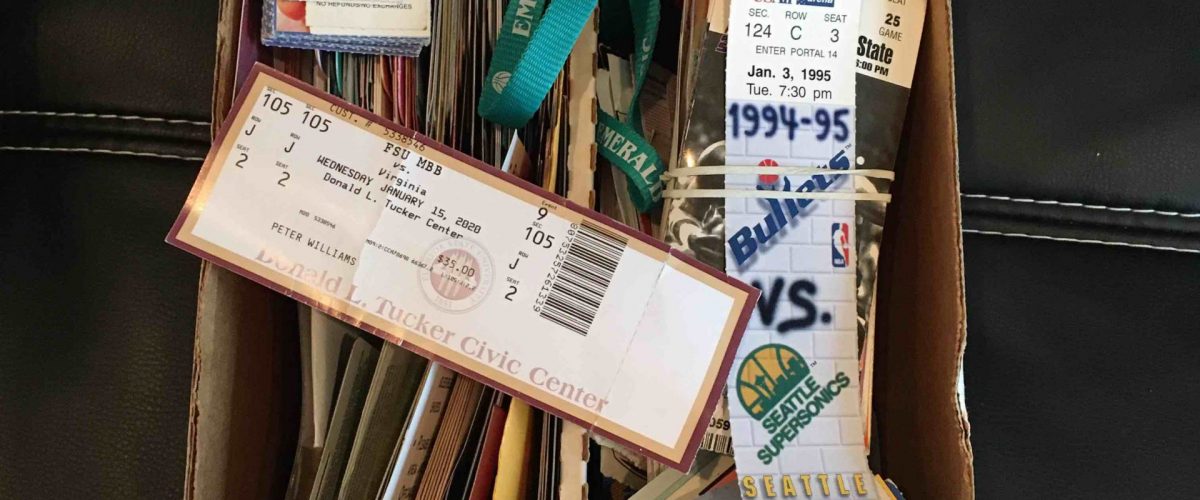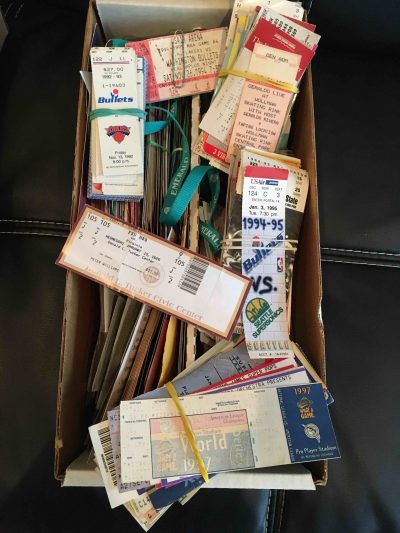There were no additional charges, just $70 for the pair of lower-level tickets for a top-10 team (FSU) against the unranked but reigning national champions (Virginia). While it was refreshing to find it’s still possible to get good entertainment value and avoid endless surcharges or “handling fees,” that’s not the point.
The point is that it’s still possible, though rare, to obtain a ticket stub, the most underrated part of attending a concert or sports event.
Unfortunately, the folks that run event venues and pro sports teams have dictated, under the guise of “improving the customer experience,” that paper tickets no longer will be issued. Now fans and concert goers must navigate one or more apps to purchase tickets and hope for adequate wireless reception to enter the building using a smartphone just so teams and venues can better capture customer data, hinder ticker resellers and keep employees from stealing cash.
It’s the latest example of how sports teams, in particular, have alienated the customer at a time when interest in all four major sports is in decline.
Look, who doesn’t like the convenience of a paperless society and using a smartphone as a digital Swiss Army knife on steroids? Rarely is a paper receipt necessary to return a product or board a plane. That’s progress.
But the ticket stub is not a receipt; it’s a souvenir. Actually, ticket “stub” is a misnomer since nobody has torn a ticket since at least the mid-1990s when stadium barcode scanners became ubiquitous. At that point, many tickets got larger and often featured stunning artwork and counterfeit-proof holograms. For bigger events, fans often received plastic lanyards to wear tickets like VIP passes.
Sports teams spend a lot of money – or at least a lot of time soliciting sponsors – to lure fans by producing forgettable giveaways like bobbleheads, T-shirts (always limited to large and XL) and junky knick-knacks when the most saved and treasured keepsake is the ticket stub.
Like a lot of folks, I have a shoebox of hundreds of concert, sports, and theater ticket stubs, loosely organized by year. (Like a lot of my sports media colleagues, I have another box with press passes.) The stubs bring back fond memories and also provide damning evidence of how sports and concert ticket prices have far outpaced inflation.
That’s another reason teams and venue operators want to eliminate ticket stubs. They don’t want us keeping track of admission prices to the degree we do when shopping for homes, cars, and groceries. I recently considered purchasing concert tickets to see a classic rock act at the same venue where I saw him seven years ago. A seat that cost $39.95 in 2013 is now $84.50. Sure, I could have checked a credit card statement but who does that? The ticket stub offered a more startling revelation. According to inflation calculators, $39.95 is just $44.24 in today’s dollars. I love this artist’s music and his live act, but can’t get past paying more than twice what I did in 2013.
Tickets also serve as evidence as memories begin to fade. When Price died in 2016, I would not have remembered the year I saw him in concert (1997) if not for the ticket stub. When The Rolling Stones recently announced what’s presumably their final tour, I would not have recalled the years or relative seat locations I had for their shows without going to the shoebox. (August 3, 1994, RFK Stadium, Section 205; March 3, 1999, Ice Palace, Section 311).
That’s why I’ve maintained a list of sports events I’ve taken my now-teenage sons to over the years. Thankfully they’re old enough to have a collection of ticket stubs going back to 2008. My younger son kept one of the tickets from our trip to watch FSU-Virginia basketball last month.
Sadly, it might be the last one he ever receives.



